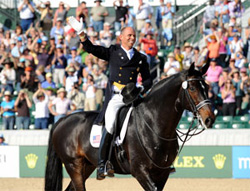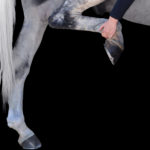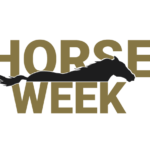October 10, 2010 — It’s over. Although at times the 16 days of the Alltech FEI World Equestrian Games seemed endless, especially when I was getting only three or four hours of sleep a night, in retrospect it seems to have slipped by quite quickly.

The WEG went out in a flash of brilliance for the U.S. after a nine-day medal drought, as the vaulting team claimed gold, the driving team earned silver and Tucker Johnson ended his driving career with an individual bronze.
I don’t like medal counts, but for those of you who are curious, Great Britain topped the list with 20 (many of which were courtesy of its para-equestrians); Germany had 19; the Netherlands, 9, and the USA 8. If you’re keeping track, that’s three in reining; the two in dressage won by Steffen Peters and the three I mentioned above.
Closing ceremonies were far more low-key than the long and lavish opening ceremonies. We listened to a few speeches from the usual suspects and then it was time for a terrific concert by Lyle Lovett that rocked the stadium. The sacrosanct arena floor, where we could not tread for nearly three weeks, suddenly was open to all. People streamed down the steps to dance and sway on the perfect footing. Many folks somehow got their hands on silver, red and yellow shakers (the kind cheerleaders use) to wave in time to the music.

It was fun and festive, with lots of powder blue-shirted volunteers in the mix. I saw a woman in a baseball cap in the pattern of the Australian flag, with an American flag stuck in the back band. Isn’t that what the WEG was all about, nation meeting nation; nation appreciating nation?
The day started with a wrap-up press conference for the WEG featuring, among others, FEI President Princess Haya and World Games Foundation 2010 CEO Jamie Link.
Princess Haya called the WEG, which attracted more than 500,00 visitors (counting athletes, volunteers and children) “a phenomenal success.”
She also noted it was “commercially successful.” The final figures are not available, but Jamie said since the foundation is non-profit, its final report will be available to the public. That should be interesting reading.
After the press conference, he and I had a very interesting talk. I suggest that you listen if you’re interested in the WEG, this one and the one to follow four years from now in Normandy, France.

Many people asked me when the WEG would come back to Kentucky. I always replied, “Never,” figuring it would move around the world as it always has, rather than being held in the same place twice. And I also figured Kentucky wouldn’t bid for it again anyway. But Jamie had another thought.
What did I think of the Games? I think they came off very well in general, and especially in terms of the competition, which was nicely staged and memorable. It’s an enormous undertaking. The public has no idea what goes on behind the scenes, and there are always problems, solvable problems, at any large event, but they require a lot of work.
Things I didn’t like? The food; too expensive. Hotels; too expensive (unless you were smart enough to wait and book them right before the WEG, rather than months before.) The trade fair and other attractions, such as the Alltech Experience; too far away from the main stadium.
Biggest surprise? The way the traffic moved. Electric signs warned of back-ups, but I never experienced them coming into the venue. I did hear stories of people having to wait a while to leave, but because I always stayed late, I didn’t encounter that.
What I liked best besides the competition? The volunteers. I’ll tell you a little more about them further down, but now I need to get back to the driving, which is where I spent most of my time this afternoon.
An electronic timing failure wreaked a little bit of havoc in the cones phase. The USA’s Chester Weber drove into the ring, then had to drive out, then drove in and had to drive out again. Finally, after an annoying delay, they got things working.
Chester drove a double clear round. Then teammate Jimmy Fairclough did the same. Jimmy told me that paved the way for the team silver medal (only two team scores count) and for Tucker, the third member of the squad to go for it as he sought an individual medal.

Tucker scored only three penalties for one knockdown at the 17th set of cones. He had clinched his bronze. As he looped around the arena, he stood up in triumph and the crowd saluted him accordingly. What a way to go.
Afterwards, we talked. It was an emotional time for both of us. I began writing about Tucker 25 years ago, when he first got serious about combined driving. He always has been a gentleman and a good horseman. I’d say the sport will miss him, but he’ll still continue his work with the U.S. Equestrian Federation and the U.S. Equestrian Team Foundation.
Here are his thoughts on finally achieving a long-term goal.

Australian Boyd Exell held on to first place throughout the competition and wound up with the gold medal, something for which he has worked for a decade. He came to the post-competition press conference in a unique way: carried on the shoulders of U.S. coach Michael Freund. I didn’t get it, but wasn’t able to ask Boyd about it before the closing ceremonies. It was bothering me, so I went downstairs in my hotel, where the Australians were partying. I caught up with Boyd, who was wearing his gold medal as he helped himself to tortilla chips, and asked what that was all about.
“Just a bit of fun,” he said.
Ijsbrand Chardon won individual silver as the Dutch team took gold. There’s still fallout from the vandalism his vehicle suffered yesterday as the investigation continues. One of his horses had to be drug tested, and he asked that all of them get the same test. He’s concerned that whoever cut up his carriage may have gotten to his horses, even though officials are sure that security for the stable itself was not breached. I can understand his unease; it’s the way people feel after their homes are burglarized.
The electronic delay at driving meant I couldn’t get to vaulting, clear on the other side of the Horse Park.
The distances here are daunting. Four years ago, at the WEG in Aachen, Germany, on a more compact plot of land, I was able to run between the cones competition and the vaulting to watch both. Anyway, I was pleased to see the American vaulters in the press room for their moment of gold medal glory after performing their Romeo and Juliet-themed freestyle. I love the way the girls look, with ornate hairdos and glittery make-up. It’s such a dramatic sport, and such fun.
The team is led by Devon Maitozo, who at 35 is practically elderly for a vaulter. But he keeps on going, a determined guy who hopes this victory is the ticket to expand the country’s awareness of vaulting.
Now it’s time for me to get back to the volunteers.
While my remembrances of WEG of course will include seeing Totilas (and to my mind, the equally impressive dressage horse, Mistral Hojris) perform for the first time, Steffen’s medals, the thrills of the cross-country and marathon courses and the transformation of the Kentucky Horse Park into a one-of-a-kind facility, perhaps my most lasting memories will be of the wonderful volunteers who kept the Games going with smiles and helping hands.
There were more than 5,000, from the guys and gals in yellow who helped with security, to the dark blue-shirted competition staff and the people in light blue who did everything else. No matter how menial their job, they all looked as if they were having a good time. And that means whether they were picking up trash or checking credentials. When I spoke with the volunteers, they always were cheerful and happy to be here, at any hour of the day or night. I think there was a real sense of belonging to something big and yes, inspirational, which helped motivate them.
I asked Ann Garrity, who helped out at the media center and drove us around in golf carts, about her decision to volunteer.
She and her pal, Pat Trotter (appropriately she is a horse person) popped up everywhere they were needed and seemed to have a ball doing it.
Our bags were checked each day as we came into the venue. Having my bags peered into at competitions everywhere from Hong Kong to Seoul to Sydney, I’ve been through more stringent checks. I can say these certainly were the most pleasant, and effective in their way. You weren’t allowed to bring in umbrellas, major food and thermoses, so they were looking for contraband, but politely.

I enjoyed meeting buddies Gwen Woods, Ronni Delay and Regina McDougal, who worked the security detail together and roamed the property together. Their yellow hats all had red wax on the brim, a variation of uniform courtesy of Maker’s Mark Bourbon, which had a dipping vat that they used to their advantage in an unusual way. Some folks find fun everywhere.
All the volunteers I met took personal pride in the Games. Many, I fear, never got to see much of what was going on beyond the areas where they were assigned. One security volunteer told me his big moment was watching a bit of the opening ceremony rehearsal. Others did get to attend some things, and I’ll bet we have some equestrian converts from that group.
They were a very special corps. I’d like to offer them my thanks now for making me feel so welcome in Kentucky.
Tomorrow I head home at last. Yay! Seventeen nights is a long time to spend in a motel, even a nice one where the Aussies party downstairs every night.
As soon as I recover from sleep deprivation, I’ll post my final gallery from the WEG. And sometime this week, I plan to do a story about Normandy 2014, so you can start planning your trip.
Goodbye from the Bluegrass State,







